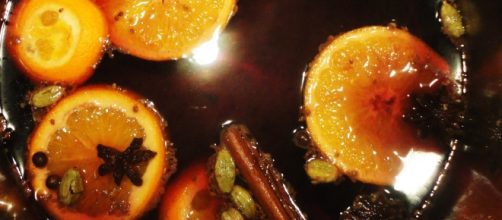On a cold February evening, after a medical visit, the Greek physician and scientist Hippocrates bewildered his patient by saying: “Natural forces within us are the true healers of disease”! He was aware that the patient’s ailments were more a state of mind than an actual pathology. Then, he took an earthenware kylix out of a drawer and poured a dense, golden fluid in it. The patient sipped the spiced wine with pleasure; soon, he felt better. In his doctor’s honour, the relieved man decided to call the drink Ypocras. For sure, he did not anticipate that Ypocras would become the progenitor of today’s mulled wine.
It is a long run from Ancient Greece to the trendy winter seasons on the Italian Dolomites. Indeed, Vin brulé (mulled wine) has become a must for aperitif after a blissful day of skiing on the slopes of Cortina d’Ampezzo, a lofty ski resort in the Veneto region. “As most travellers come here to socialize, the over 140 kilometres of marked slopes are often far from being crowded” says Pippa Middleton, a regular in Cortina. “Ernest Hemingway’s favourite après was Enoteca Cortina, still running to these days”.
Call it Vin brulé ,“Glühwein” in German or “Vin Chaud” in French, the craft of preparing hot, spiced wine is growing more and more popular on the slopes. Clearly, there are various recipes, variations, schools of thought on the matter.
The main ingredient is, of course, wine. “Mulled wine does not call for an expensive wine” say Victoria Moore, author of the book How To Drink At Christmas, “but it should still be something you should be happy to drink cold. Tempranillo from Spain or a Chilean merlot are two good alternatives; the Merlot, in particular, is bold and fruity but not so distinctive to cover the spices”.
Then come the spices: more traditionally, cinnamon, star anise, nutmeg and cloves, but a try should be given at allspice, cardamom, vanilla pods, bay leaves or ginger. All these spices should be used sparingly, in particular star anise and cloves, as their flavour can become quite sturdy when stewed at length. A touch of citrus or clementine can enhance these warm spices properly.
In Cortina d’Ampezzo, mulled wine is usually prepared with Chardonnay or Pinot Blanc, with the addition of cinnamon, apple and cloves. “Some British tourists are impressed by the taste of our mulled wine”, says a local. “Sadly, they are used to the prepared mulled wines available in British stores, which are usually made with cheap wine and are quite “sugary”.
On the contrary, only the best wines are used to prepare vin brulé on the scenic Dolomites. And if someone asks naively for a non-alcoholic mulled wine at a local bar, the surrounding customers’ reaction can be quite shocked and contemptuous. Indeed, the motto in Cortina is: “Ski hard, play hard!”.

